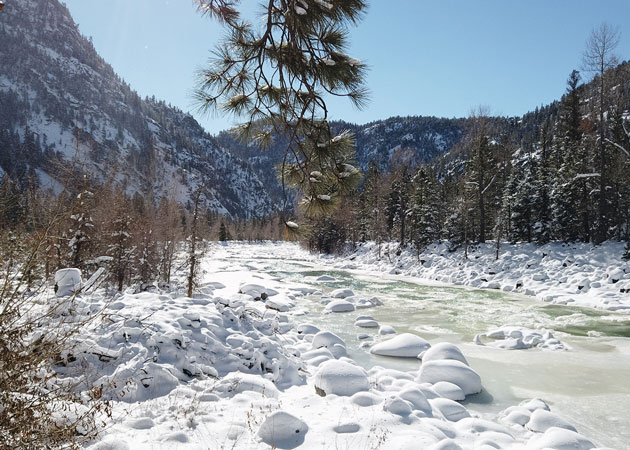Understanding Water Rights in Ranches
Water rights in ranching refer to the legal entitlements granted to individuals or entities to use and access water resources for various agricultural, industrial, municipal, or environmental purposes. These rights typically govern the allocation, distribution, and management of water supplies, ensuring equitable access, efficient utilization, and sustainable stewardship of water resources within a given jurisdiction.
Understanding water rights is essential for ranch owners to effectively manage water resources, secure reliable water supplies for agricultural operations, and navigate regulatory requirements governing water use and allocation. Water rights determine the extent of a ranch owner’s entitlements to use surface water or groundwater for irrigation, livestock watering, domestic consumption, or other beneficial purposes. By understanding water rights, ranch owners can optimize water management practices, mitigate legal risks, and ensure compliance with water laws and regulations, safeguarding their ranching operations’ long-term viability and sustainability.
Basics of Water Rights
Water rights are legal rights granted by governments or regulatory authorities to individuals, organizations, or entities to use and access water resources for specific purposes. These rights are based on principles of property law, public trust doctrine, and regulatory frameworks governing water allocation and management. Water rights typically entail the right to divert, extract, store, convey, and use water from surface water bodies (e.g., rivers, streams, lakes) or groundwater aquifers for beneficial uses such as irrigation, livestock watering, municipal supply, industrial processes, or environmental conservation.
Types of Water Rights
Riparian Rights
Riparian rights are those associated with properties adjacent to natural watercourses such as rivers, streams, or lakes. Riparian landowners are legally entitled to use and access water from these water bodies for reasonable and beneficial purposes, subject to the doctrine of reasonable use and non-interference with other riparian rights holders. Riparian rights are based on the principle of landownership abutting a watercourse and typically prioritize the rights of downstream riparian landowners over upstream users.
Prior Appropriation Rights
Prior appropriation rights, also known as “first in time, first in the right,” are water rights allocated based on a priority system established by the first beneficial use of water. Under this doctrine, the first users to divert water for beneficial purposes acquire priority rights over subsequent users, regardless of proximity to the water source or riparian ownership. Prior appropriation rights prioritize the efficient allocation of water resources, promote economic development, and provide certainty and security for water users, particularly in arid and semi-arid regions with limited water availability. This method of regulating water rights is used primarily in the western United States.

Groundwater Rights
Groundwater rights pertain to the legal entitlements to extract and use groundwater from underground aquifers for various purposes such as irrigation, municipal supply, industrial processes, or domestic consumption. Unlike surface water rights, which are often governed by riparian or prior appropriation doctrines, groundwater rights may be subject to different legal frameworks, regulatory regimes, and management practices. Groundwater rights may be allocated based on land ownership above the aquifer, statutory permits or licenses, or adjudicated groundwater basins with established pumping rights and regulations. For Texas water rights go here: LINK
Legal Framework for Water Rights
The legal framework for water rights varies among jurisdictions and may include statutory laws, administrative regulations, court decisions, and common law principles governing water allocation, use, and management. Water rights are typically subject to oversight and regulation by state or provincial water agencies, local water districts, or tribal authorities, depending on the water resource’s jurisdiction and nature. Legal principles such as beneficial use, reasonable use, priority, and public trust doctrine shape the allocation and administration of water rights, ensuring equitable access, environmental protection, and sustainable management of water resources.
Rule of Capture
The rule of capture is a legal doctrine that grants landowners the right to extract and take possession of natural resources such as water, oil, and gas found beneath their property, even if these resources migrate from beneath neighboring lands. Originating in the United States in the 19th century, this rule encourages the development and utilization of resources by giving landowners a strong incentive to drill and produce. However, it also leads to potential issues such as over-extraction, environmental degradation, and disputes between neighboring property owners, as it lacks provisions for managing shared resources sustainably or equitably. The rule of capture remains a fundamental but controversial aspect of property and resource law. Texas and Indiana currently use rule of capture in the United States. For more information on the rule of capture in Texas go here – LINK.
Reasonable Use
The reasonable use doctrine for water rights is a legal principle that allows landowners to extract and use groundwater from beneath their property, provided that their use is deemed reasonable and does not cause harm to neighboring landowners or the environment. This doctrine balances the rights of individual landowners with the need to manage and protect shared water resources. Under the reasonable use doctrine, water use must be beneficial and not wasteful, ensuring that one landowner’s extraction does not significantly lower the water table, dry up wells, or otherwise impair the water rights of others. By promoting equitable and sustainable water use, the reasonable use doctrine helps prevent conflicts and over-extraction, fostering long-term stewardship of vital groundwater resources.
Allocation and Distribution
Water Allocation Systems
Water allocation systems are essential frameworks designed to manage the distribution of water resources among various users, ensuring equitable access and sustainability. These systems often incorporate principles such as prior appropriation and riparian rights, which determine water usage based on factors like historical usage and proximity to water sources. In regions facing water scarcity, integrated water resources management (IWRM) is crucial, combining social, economic, and environmental considerations to optimize water allocation. Effective water governance within these systems relies on robust policies, stakeholder collaboration, and adaptive strategies to address challenges such as climate change, population growth, and competing demands from agriculture, industry, and domestic use.
Prior Appropriation Doctrine
The prior appropriation doctrine allocates water rights based on a system of priority determined by the “first in time, first in right” principle. Under this doctrine, the first users to divert water for beneficial purposes acquire senior rights, taking precedence over subsequent users during water scarcity or shortage. Prior appropriation systems require users to obtain permits or licenses from regulatory authorities, comply with diversion and beneficial use requirements, and report water use data to maintain priority rights.
Riparian Doctrine
The riparian doctrine allocates water rights to landowners with property abutting natural watercourses, granting them the right to use and access water for reasonable and beneficial purposes. Riparian rights are based on principles of land ownership and the natural flow of water, with priority determined by riparian ownership rather than the time of appropriation. Riparian systems often prioritize the rights of downstream landowners over upstream users and require reasonable use to avoid interference with other riparian rights holders.
Riparian Doctrine
The riparian doctrine allocates water rights to landowners with property abutting natural watercourses, granting them the right to use and access water for reasonable and beneficial purposes. Riparian rights are based on principles of land ownership and the natural flow of water, with priority determined by riparian ownership rather than the time of appropriation. Riparian systems often prioritize the rights of downstream landowners over upstream users and require reasonable use to avoid interference with other riparian rights holders.
Groundwater Pumping Regulations
Groundwater pumping regulations govern the extraction and use of groundwater resources to prevent overexploitation, depletion, and degradation of aquifers. These regulations may include permitting requirements, pumping limits, healthy spacing regulations, groundwater recharge requirements, and sustainable yield assessments to ensure the long-term viability and sustainability of groundwater supplies. Groundwater management practices may vary depending on hydrogeological conditions, aquifer characteristics, and local groundwater dynamics, with some jurisdictions implementing groundwater sustainability plans or groundwater management districts to regulate pumping activities and protect groundwater resources.

Methods of Water Distribution
Irrigation Districts
Irrigation districts are cooperative organizations or public agencies responsible for managing water distribution and delivery systems to support agricultural irrigation within designated geographic areas. These districts may operate surface water delivery infrastructure such as canals, ditches, pipelines, and irrigation networks to convey water from reservoirs, rivers, or diversion works to irrigated farmland. Irrigation districts may allocate water rights to member farmers, levy assessments or fees to fund operations and maintenance and coordinate water management practices to optimize water use efficiency and agricultural productivity.
Water Banking
Water banking involves storing, exchanging, and transferring water rights through temporary or permanent transactions to meet fluctuating water demands, mitigate shortages, and facilitate water management flexibility. Water banks may store surplus water during wet periods for use during dry periods, lease or sell water rights to other users or entities, or facilitate water transfers between agricultural, municipal, industrial, or environmental users. Water banking mechanisms help optimize water allocation, promote market efficiency, and address seasonal or regional water imbalances.
Water Markets
Water markets facilitate buying, selling, and trading water rights or allocations between willing buyers and sellers to allocate water resources efficiently, address water shortages, and incentivize water conservation. Water markets operate under regulatory frameworks that define property rights, establish market rules, and ensure transparency, fairness, and accountability in water transactions. Depending on market dynamics, regulatory constraints, and stakeholder preferences, water markets may involve spot markets, long-term contracts, lease agreements, or permanent water rights transfers.
Understanding water rights is crucial for ranch owners to effectively manage water resources, secure reliable water supplies for agricultural operations, and navigate regulatory requirements governing water use and allocation. Water rights determine the extent of a ranch owner’s entitlements to use surface water or groundwater for irrigation, livestock watering, domestic consumption, or other beneficial purposes. By understanding water rights, ranch owners can optimize water management practices, mitigate legal risks, and ensure compliance with water laws and regulations, safeguarding their ranching operations’ long-term viability and sustainability.
Acquisition and Transfer of Water Rights
Process of Acquiring Water Rights
Acquiring water rights typically involves obtaining permits, licenses, or approvals from regulatory authorities empowered to allocate water resources. Depending on the jurisdiction and the type of water rights sought, applicants may need to submit applications, documentation, and supporting evidence demonstrating the proposed beneficial use of water, compliance with regulatory requirements, and adherence to environmental standards. The acquisition process may entail public notice, review, comment periods, and hearings or administrative proceedings to adjudicate water rights applications.
Transferability of Water Rights
Water rights may be transferable under certain conditions, allowing holders to buy, sell, lease, or exchange their rights with other users or entities. Transferability provisions vary depending on statutory laws, regulatory policies, and contractual agreements governing water rights transactions. Transferability may be subject to regulatory approval, compliance with water management plans, or conditions ensuring continued beneficial use and environmental protection. Water rights transfers are critical in optimizing water allocation, facilitating market transactions, and addressing changing water demands and priorities. For example in the State of Texas water rights are often acquired through the acquisition of land.
Considerations for Buying or Selling Water Rights
When buying or selling water rights, ranch owners must consider various factors to ensure compliance, maximize value, and mitigate risks associated with water transactions. Considerations may include assessing the legal status and priority of water rights, verifying the reliability and sustainability of water supplies, evaluating the physical characteristics and hydrological conditions of water sources, and understanding the regulatory constraints and permitting requirements governing water use and transfers. Due diligence, legal counsel, and consultation with water experts are essential for navigating the complexities of water rights transactions and safeguarding the interests of both buyers and sellers.

Regulation and Compliance
Regulatory Agencies for Water Rights
Regulatory agencies responsible for water rights vary among jurisdictions and may include state or provincial water boards, river basin commissions, water districts, MUD (Municipal Utility District), or tribal authorities. These agencies oversee water allocation, management, and enforcement activities, administer permits or licenses for water use, and develop policies, regulations, and guidelines to protect water resources and ensure equitable access for all users. Regulatory agencies may also collaborate with stakeholders, conduct water resource assessments, and implement conservation measures to address water challenges and promote sustainable water management practices.
Compliance with Water Rights Laws
Compliance with water rights laws requires adherence to statutory requirements, regulatory standards, and permit conditions governing water allocation, use, and administration. Water rights holders must comply with diversion limits, beneficial use requirements, reporting obligations, and other regulatory mandates to maintain their entitlements and avoid legal liabilities. Compliance may involve monitoring water usage, keeping records, submitting reports, and participating in water management programs or conservation initiatives to demonstrate responsible stewardship of water resources.
Enforcement and Penalties for Violations
Enforcement of water rights laws involves monitoring, investigation, and enforcement actions by regulatory agencies to address violations, unauthorized diversions, or non-compliance with water regulations. Penalties for violations may include fines, penalties, enforcement orders, permit revocation, or legal action to cease unlawful activities and restore compliance with regulatory requirements. Enforcement efforts may also include education, outreach, and technical assistance to promote voluntary compliance and foster cooperation among water users in resolving disputes and achieving sustainable water management objectives.
Challenges and Issues
Water Scarcity and Drought
Water scarcity and drought pose significant challenges for ranching operations, affecting water availability, agricultural productivity, and ecosystem health. Drought conditions may result in reduced stream flows, depleted groundwater levels, and diminished water supplies for irrigation, livestock watering, and domestic use. Ranch owners must implement water conservation measures, drought contingency plans, and adaptive management strategies to mitigate the impacts of water scarcity, preserve water resources, and maintain the resilience of their operations during periods of drought.
Conflicts over Water Allocation
Conflicts over water allocation arise from competing demands for limited water supplies, conflicting water rights, and divergent interests among water users, communities, and stakeholders. Allocation disputes may involve water rights priorities, interbasin transfers, instream flow requirements, or environmental allocations. Ranch owners must engage in collaborative water management approaches, negotiate equitable solutions, and participate in dispute resolution processes to address conflicts, protect their water rights, and ensure fair and sustainable allocation of water resources.
Environmental Concerns and Conservation Efforts
Environmental concerns and conservation efforts focus on preserving aquatic ecosystems, protecting habitat integrity, and maintaining water quality in rivers, streams, and riparian areas. Ecological impacts from water diversions, agricultural runoff, and land development activities may degrade water quality, impair aquatic habitats, and threaten endangered species. Ranch owners can contribute to conservation efforts by implementing best management practices, riparian restoration projects, and watershed stewardship initiatives to enhance ecosystem resilience, protect biodiversity, and promote sustainable water use practices.
Conclusion
Understanding water rights is crucial for ranch owners to effectively manage water resources, secure reliable water supplies, and comply with regulatory requirements governing water use and allocation. Water rights determine the extent of a ranch owner’s entitlements to use surface water or groundwater for irrigation, livestock watering, domestic consumption, or other beneficial purposes. By understanding water rights, ranch owners can optimize water management practices, mitigate legal risks, and ensure compliance with water laws and regulations, safeguarding their ranching operations’ long-term viability and sustainability.
Critical considerations for ranch owners include navigating the process of acquiring and transferring water rights, complying with water rights laws and regulations, and addressing challenges such as water scarcity, allocation conflicts, and environmental concerns. Ranch owners must engage in proactive water management practices, collaborate with regulatory agencies and stakeholders, and implement sustainable water use strategies to protect water resources, preserve ecosystem health, and maintain the resilience of their ranching operations.
Understanding water rights is essential for promoting sustainable ranching practices that balance economic viability, environmental stewardship, and social responsibility. By integrating water rights considerations into land management decisions, water conservation initiatives, and community engagement efforts, ranch owners can enhance water resource sustainability, reduce vulnerability to water-related risks, and promote their ranching operations’ long-term resilience and prosperity in an increasingly water-constrained world.
Q&A: Understanding Water Rights in Ranches
Q1: What are water rights in the context of ranching?
A1: Water rights in ranching refer to the legal entitlements granted to individuals or entities to use and access water resources for various purposes such as agricultural, industrial, municipal, or environmental needs. These rights govern the allocation, distribution, and management of water supplies, ensuring equitable access and sustainable stewardship of water resources.
Q2: Why is it important for ranch owners to understand water rights?
A2: Understanding water rights is crucial for ranch owners to effectively manage water resources, secure reliable water supplies for their operations, and navigate the regulatory requirements governing water use and allocation. This knowledge helps optimize water management, mitigate legal risks, and ensure compliance with relevant laws and regulations.
Q3: What are the basic principles behind water rights?
A3: Water rights are based on property law, the public trust doctrine, and regulatory frameworks that govern water allocation and management. They typically involve the right to divert, extract, store, and use water from surface water bodies or groundwater aquifers for beneficial uses like irrigation, livestock watering, or municipal supply.
Q4: What are the different types of water rights?
A4: There are three main types of water rights:
Riparian Rights: Associated with properties adjacent to natural watercourses, allowing landowners to use water for reasonable and beneficial purposes.
Prior Appropriation Rights: Based on the principle of “first in time, first in right,” where the first users to divert water acquire priority over others, regardless of proximity.
Groundwater Rights: Legal entitlements to extract and use groundwater, governed by various legal frameworks and regulatory regimes.
Q5: What legal frameworks govern water rights?
A5: The legal framework for water rights varies by jurisdiction and includes statutory laws, administrative regulations, court decisions, and common law principles. Key principles like beneficial use, reasonable use, and priority shape water rights allocation and management, ensuring equitable access and environmental protection.
Q6: What is the rule of capture?
A6: The rule of capture is a legal doctrine that allows landowners to extract natural resources like water, oil, or gas found beneath their property, even if these resources migrate from neighboring lands. This rule encourages resource development but can lead to over-extraction and environmental degradation.
Q7: What does the reasonable use doctrine entail?
A7: The reasonable use doctrine allows landowners to extract and use groundwater, provided the use is deemed reasonable and does not harm neighboring properties or the environment. This doctrine promotes equitable and sustainable water use, helping to prevent conflicts and over-extraction.
Q8: How are water rights allocated and distributed?
A8: Water rights are allocated through systems like the Prior Appropriation Doctrine (priority-based allocation) and the Riparian Doctrine (land ownership-based allocation). Groundwater pumping is regulated to prevent over-exploitation, with practices varying based on local conditions.
Q9: What are irrigation districts, and how do they function?
A9: Irrigation districts are organizations that manage water distribution for agricultural purposes within specific areas. They operate water delivery systems and allocate water rights to farmers, ensuring efficient use and maintenance of irrigation infrastructure.
Q10: What is water banking, and how does it work?
A10: Water banking involves storing, exchanging, and transferring water rights to meet fluctuating demands and mitigate shortages. Water banks facilitate the temporary or permanent transfer of water rights, helping optimize water allocation and address imbalances.
Q11: What should ranch owners consider when acquiring or transferring water rights?
A11: Ranch owners should assess the legal status, reliability, and sustainability of water rights, verify the physical and hydrological characteristics of water sources, and understand regulatory constraints. Legal counsel and expert consultation are essential for navigating water rights transactions.
Q12: Which regulatory agencies oversee water rights?
A12: Regulatory agencies vary by jurisdiction and may include state or provincial water boards, river basin commissions, water districts, or tribal authorities. These agencies administer water allocation, enforce regulations, and develop policies for sustainable water management.
Q13: What challenges do ranch owners face regarding water rights?
A13: Ranch owners face challenges such as water scarcity, allocation conflicts, and environmental concerns. These issues can impact water availability, agricultural productivity, and ecosystem health, requiring proactive management and conservation strategies.
Q14: How can ranch owners contribute to environmental conservation?
A14: Ranch owners can implement best management practices, participate in riparian restoration projects, and engage in watershed stewardship initiatives. These efforts help protect aquatic ecosystems, enhance biodiversity, and promote sustainable water use practices.
Q15: What is the significance of water rights for the long-term sustainability of ranching operations?
A15: Water rights are crucial for ensuring the long-term viability of ranching operations by securing water supplies, optimizing resource management, and maintaining compliance with regulations. Understanding and managing water rights help protect ranching operations from water-related risks and promote sustainability.



